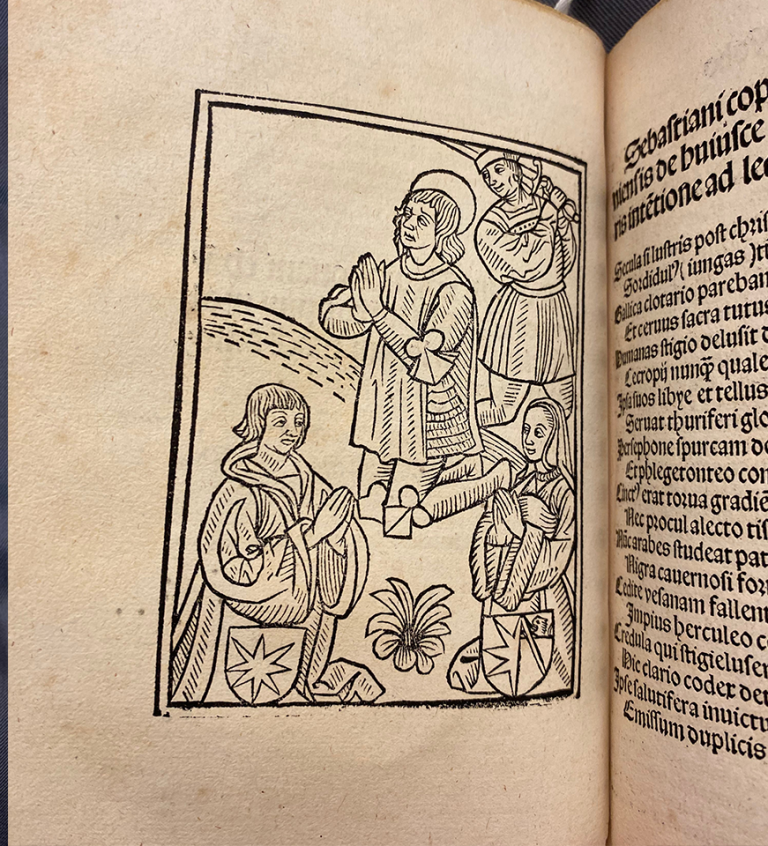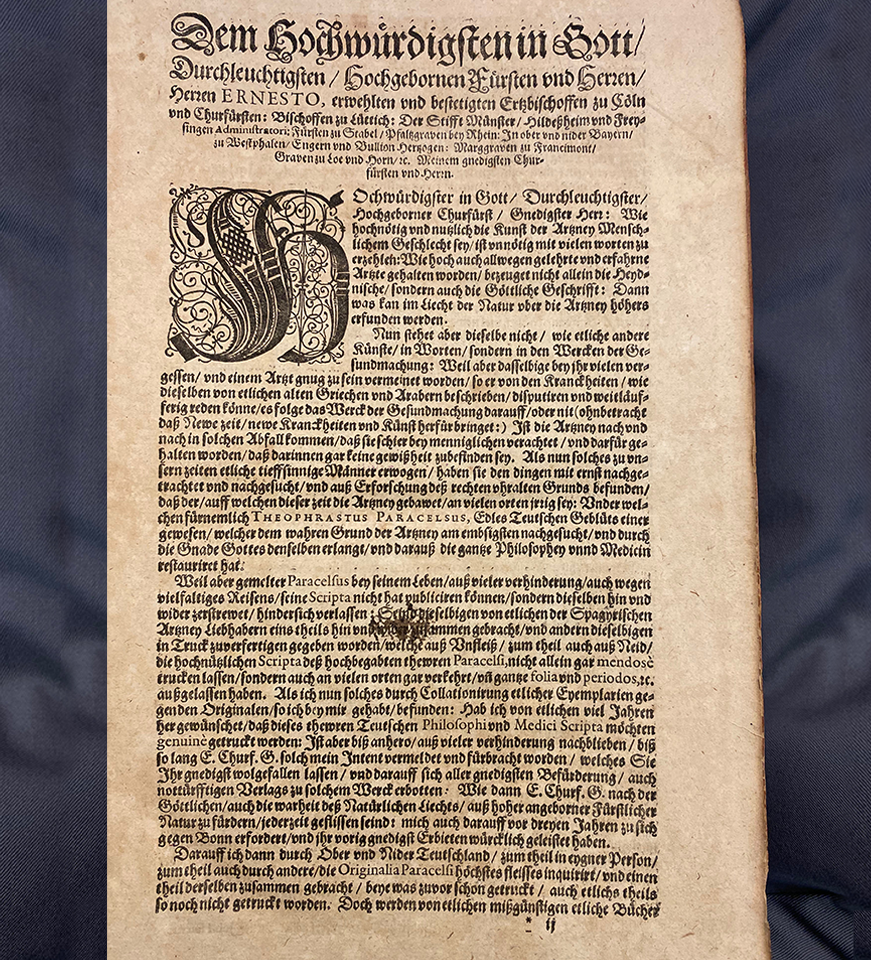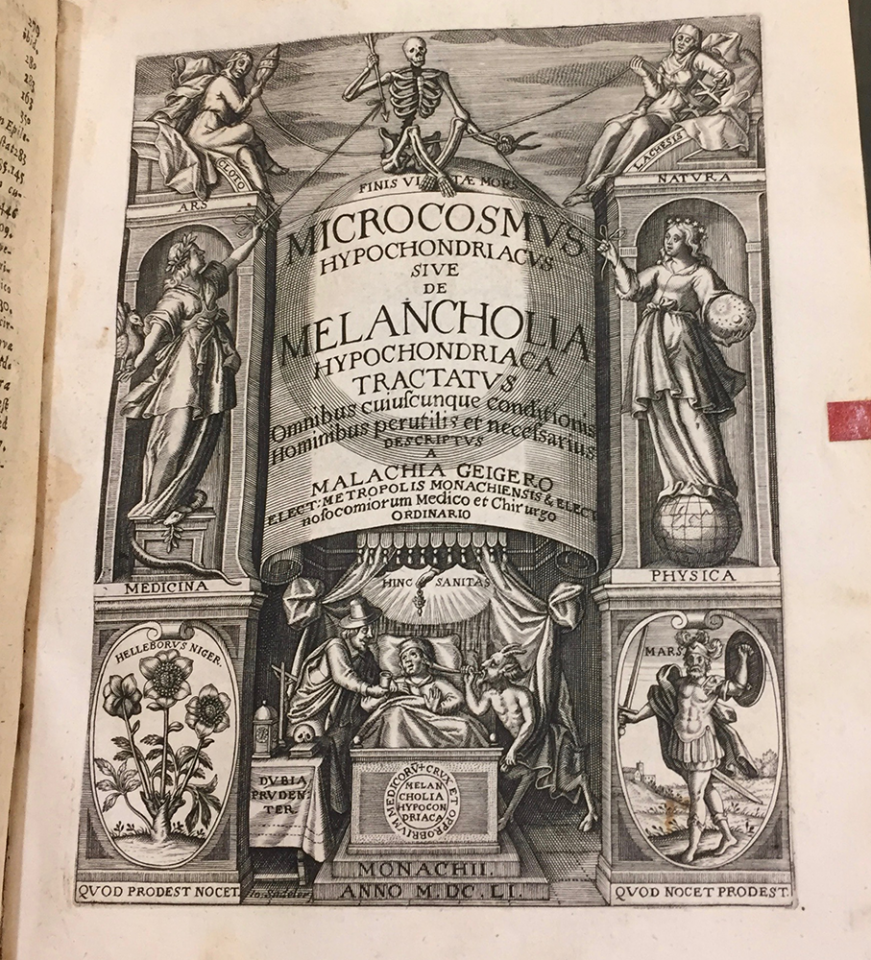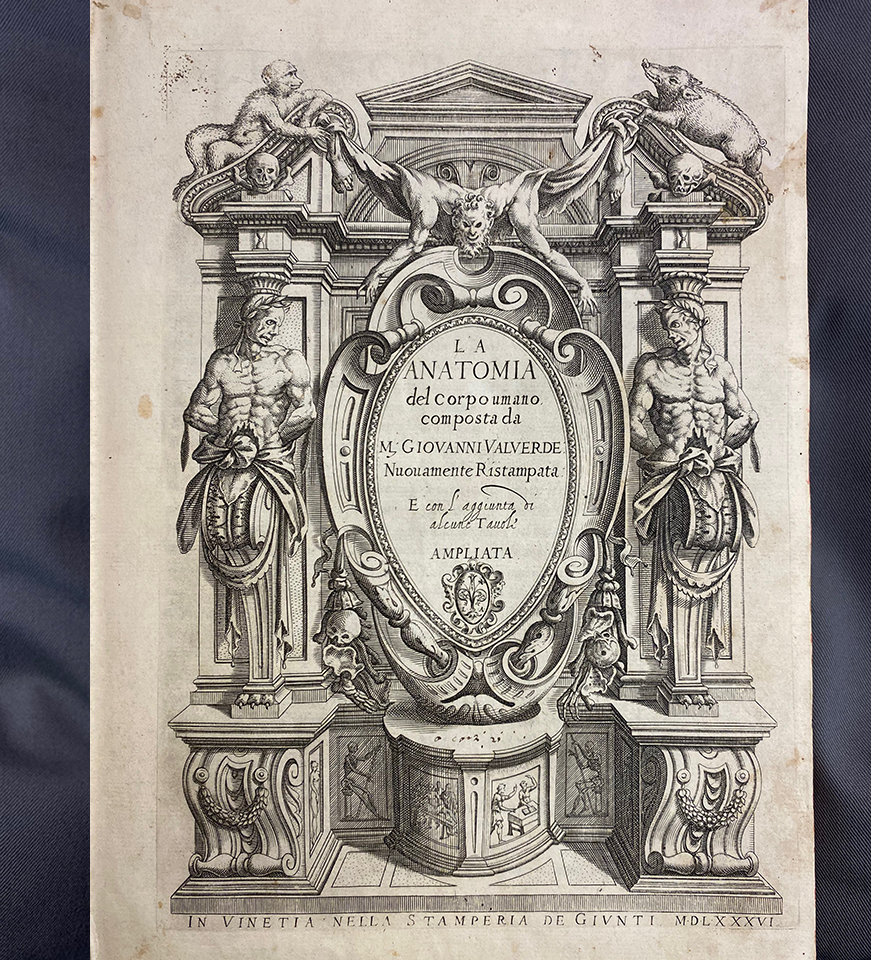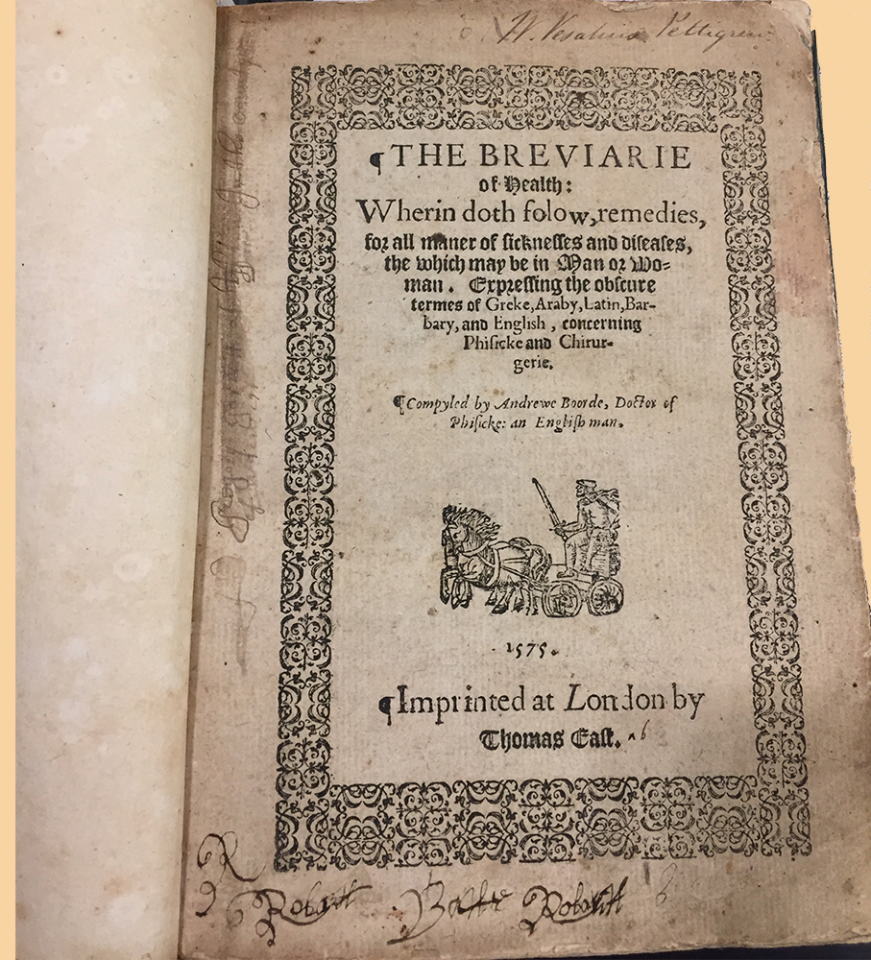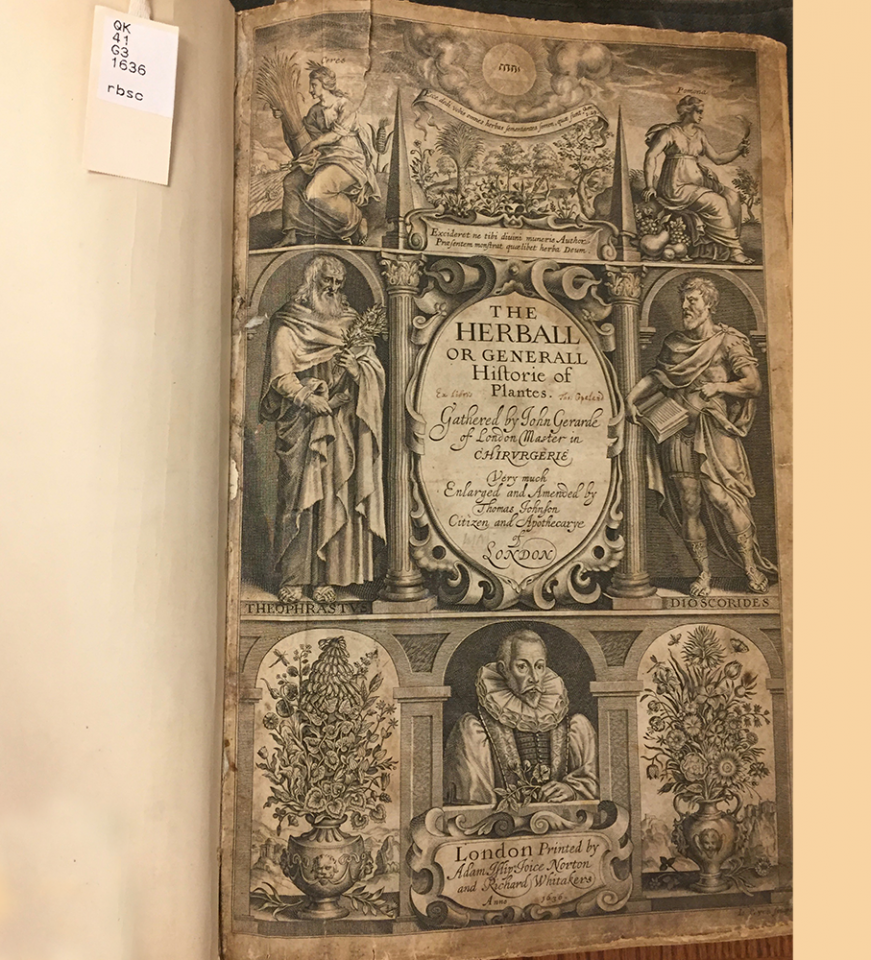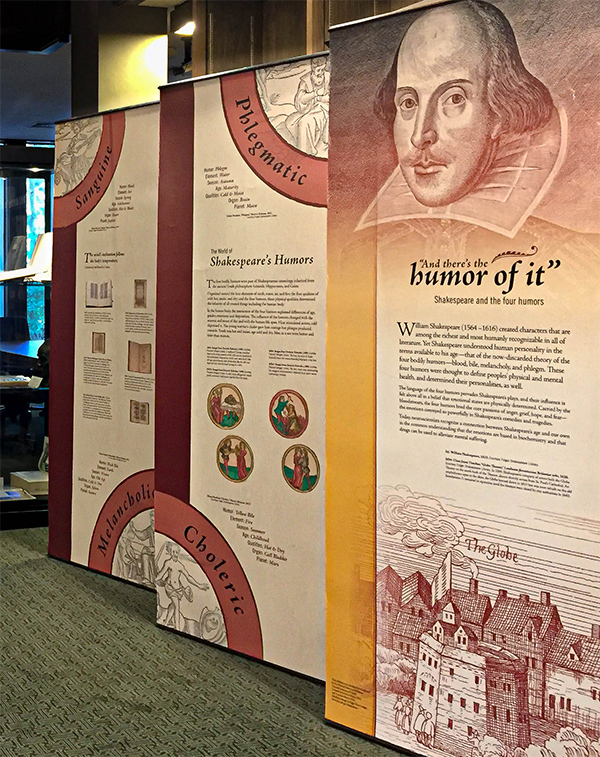
The exhibition featured additional materials from UBC Library’s collections to explore related topics, such as Shakespearean theatre in British Columbia and Shakespeare in children’s literature. Collection highlights included: the second edition folio of Shakespeare’s complete works (1807), first editions of Spenser’s The Faerie Queene (1590), John Donne’s Poems (1633), and George Herbert’s The Temple (1633), along with medical manuals such as 16th century midwifery book The byrth of mankynde (1540) by Eucharius Rösslin and the milestone physiology book, Exercitatio anatomica de motu cordis et sanguinis in animalibus (1628) by William Harvey.
In 2022, NLM refreshed the original online exhibition from 2012 into a responsive website with related digital resources from the National Library of Medicine. https://www.nlm.nih.gov/exhibition/shakespeare-and-the-four-humors/about.html
Medicine with Reference to the Humours
The theory of the four humours was central to the teachings of Hippocrates and Galen and latterly Avicenna and dominated western medicine until the 17th century. Organized around Aristotle’s four elements of earth, water, air, and fire, it was believed that health relied on the balance of humours, black bile, blood, yellow bile and phlegm, together with the qualities of cold, hot, moist and dry. The display includes Hippocrates’ De Natura Hominis in which he is purported by Galen to have put forward the humoral philosophy. The Peacham book is open to the woodcuts for Sangine and Choller and the title page of Microcosmus hypochondiracus depicts the black hellebore flower, which was a remedy for melancholy or depression. Paracelsus rejected Galen’s claim that health and disease are controlled by the “four humours” and was a pioneer in the use of chemicals and minerals in medicine. Elzevir published Helmont’s book, which emphasises observational medicine and a newer scientific methodology. This was a publishing family of the 16th and 17th centuries known for publishing important scientific works in a smaller format for ease of carrying and use.
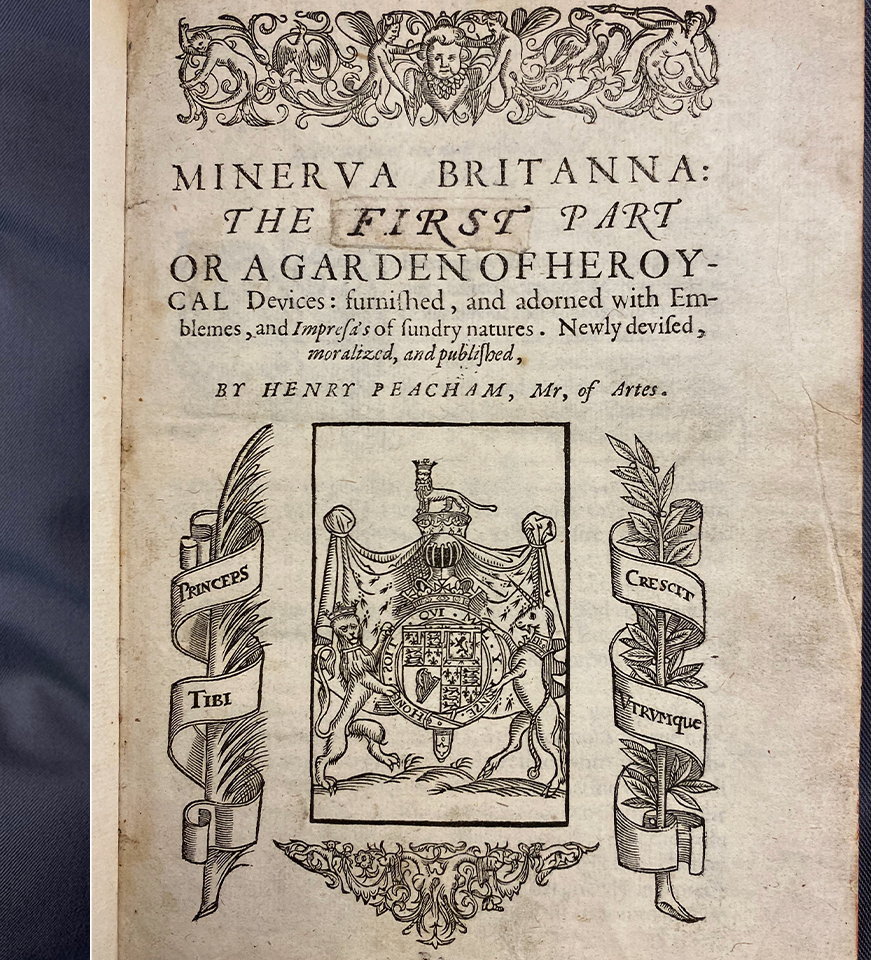
Minerva britanna.
Author: Peacham, Henry, approximately 1576-approximately 1643
Date: 1612.
Author: Paracelsus, 1493-1541.
PR2329 P15 M5 1612
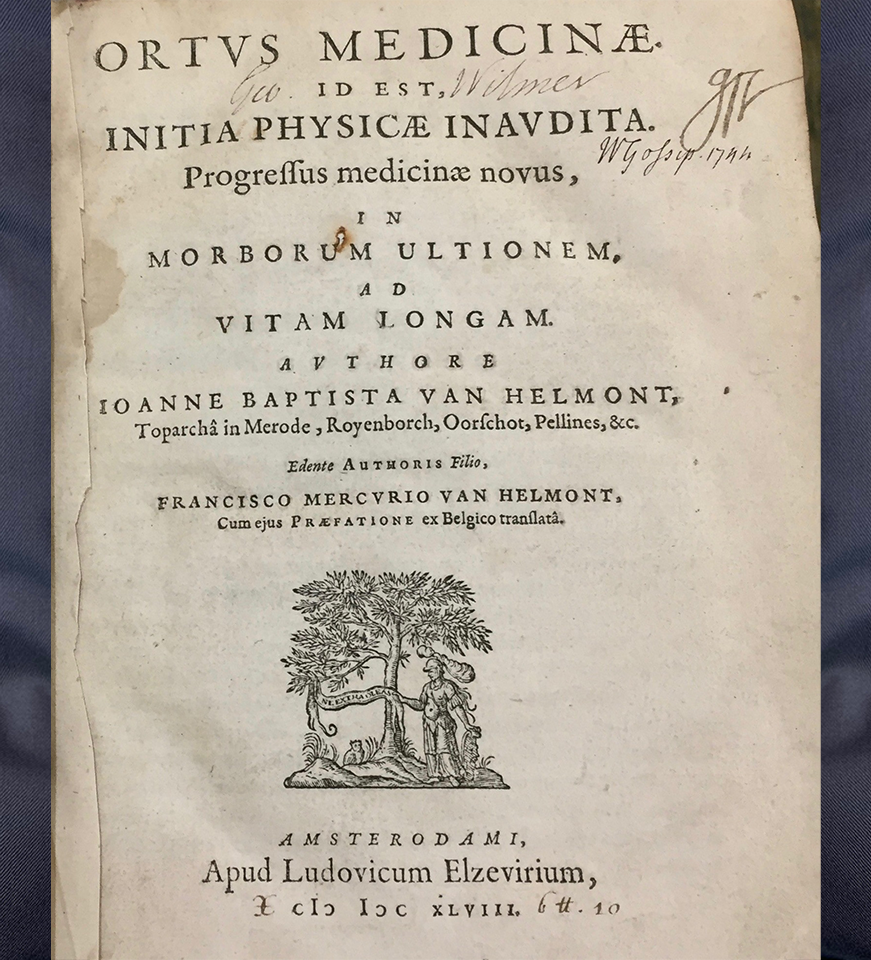
Ortus medicinae; id est, initia physicae inaudita
Author: Helmont, Jean Baptiste van, 1577-1644
Date: 1648.
WZ250 H46 1648
Medicine in the Age of Shakespeare I
Medical knowledge of Egyptians, Greeks, and Romans prior to the invention of moveable type was scattered, in manuscripts, lost to general readership. With the development of printing, rediscovered older knowledge was translated, published and disseminated and medical and scientific developments flourished. These examples of medical texts of the time of Shakespeare demonstrate some of the significant innovations. The Anatomy of Melancholy, considered to be the first psychiatric encyclopedia that is also a work of literature; the woodcuts in The noble experyence of the vertuous handy warke of surgeri practysyd are earliest specimens of medical illustration; Harvey’s first edition changed conceptions of circulation of blood and function of the heart, veins and arteries; and Paré was pioneer in surgical techniques and other medical disciplines.
The examples also show the irregular and slow uptake of new discoveries. For example, Harvey’s critical discovery about the circulation in the blood published in 1628 was not included in the 2nd edition of Crooke’s Mikrokosmographia in 1631 and the 8th edition of English-mans treasure; With the True anatomie of mans body published in 1633 did not adopt Vesalius’ method instead following Galenic tradition..
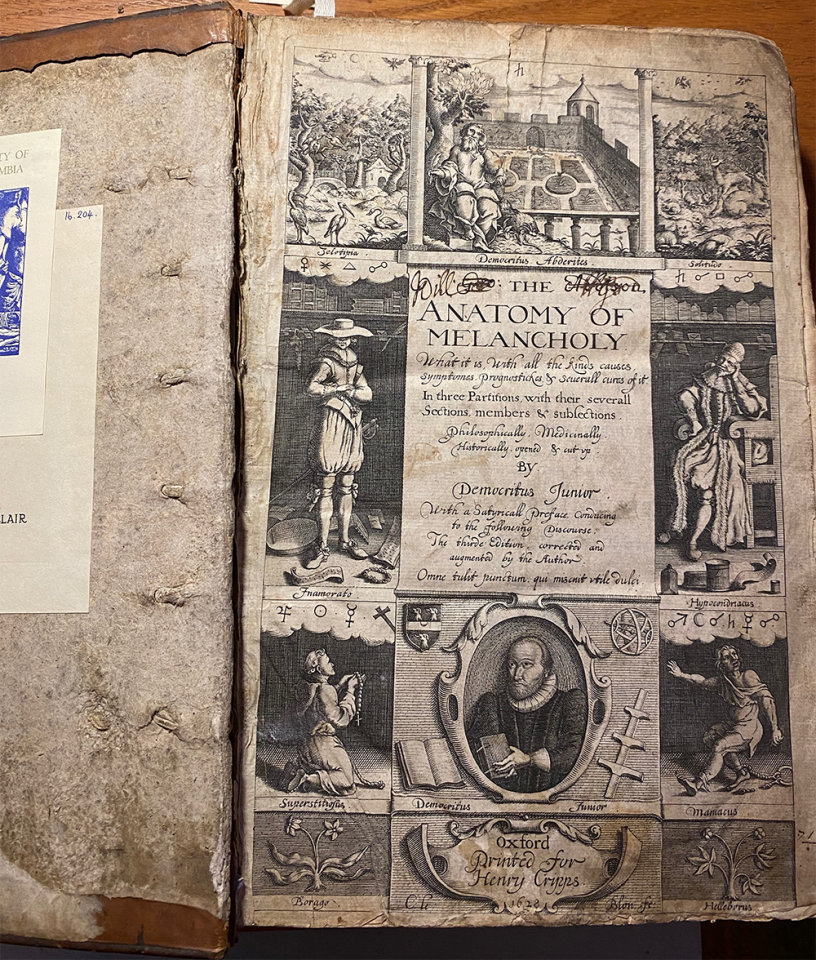
Anatomy of melancholy: what it is, with all the kinds causes, symptomes, prognostickes, & seuerall cures of it
Author: Burton, Robert 1577-1640
Date: 1632.
PR 2223 A1 1632
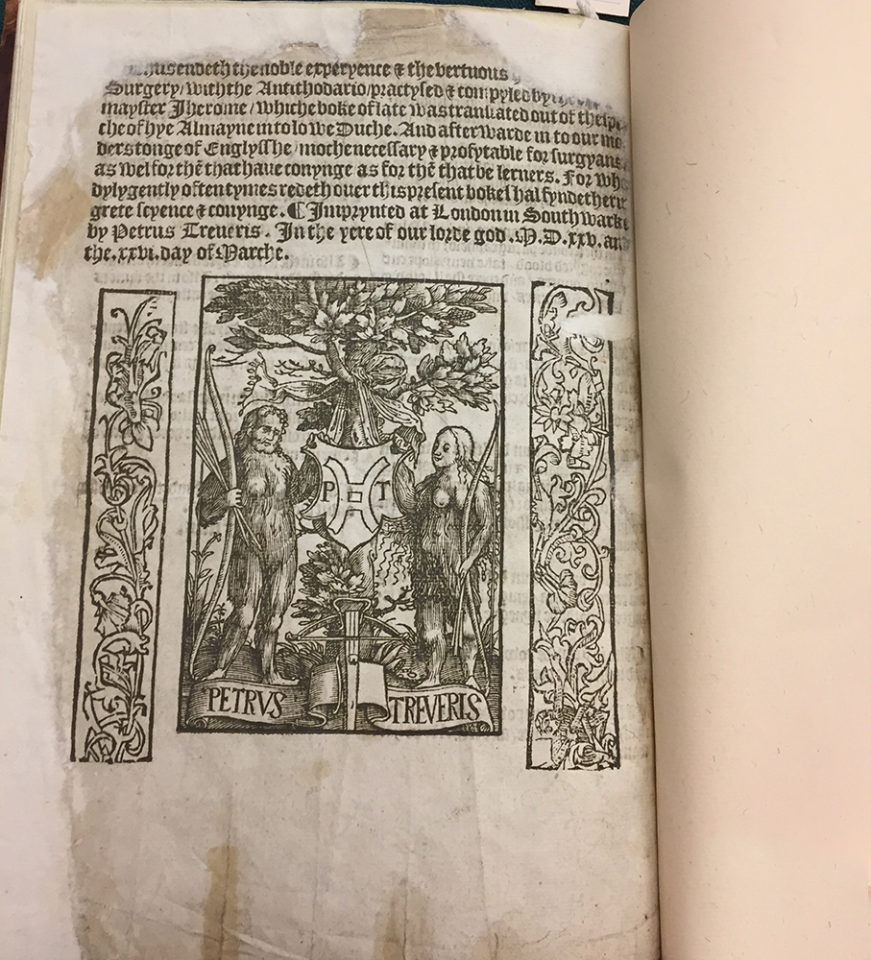
The noble experyence of the vertuous handy warke of surgeri practysyd
Author: Brunschwig, Hieronymus ~1450-~1512
Date: 1525.
WZ240 B78 1525
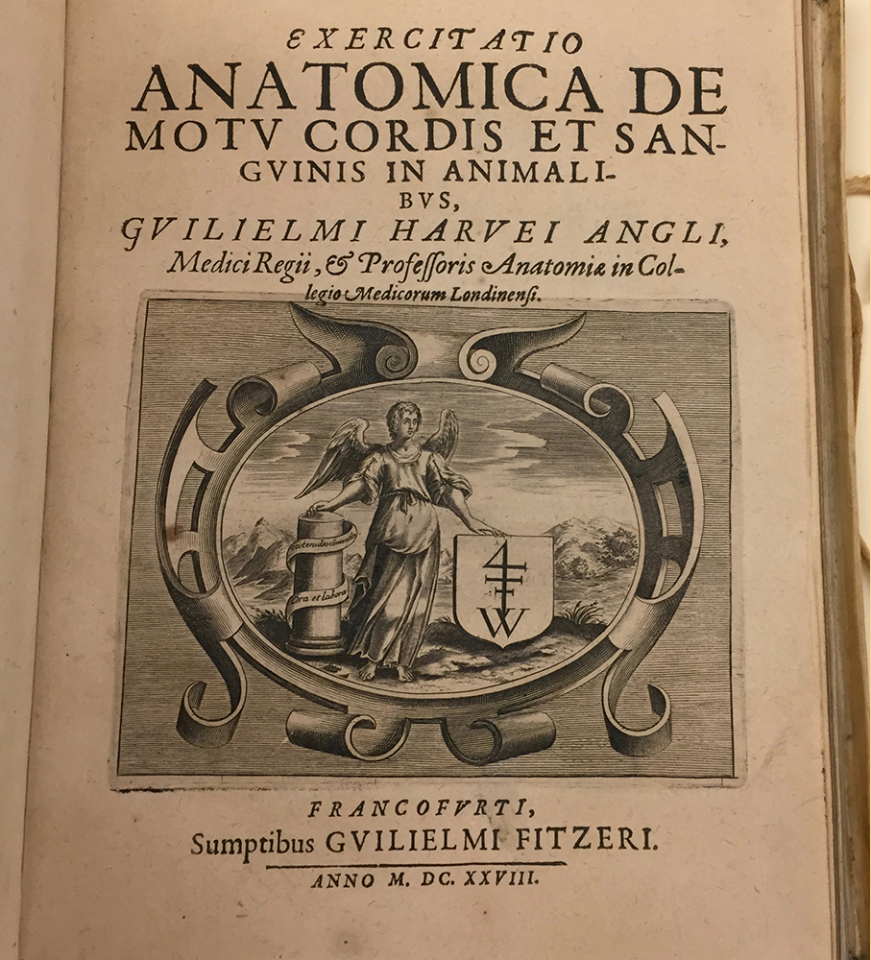
Exercitatio anatomica de motu cordis et sanguinis in animalibus
Author: Harvey, William, 1578-1657
Date: 1628.
WZ250 H34 1628
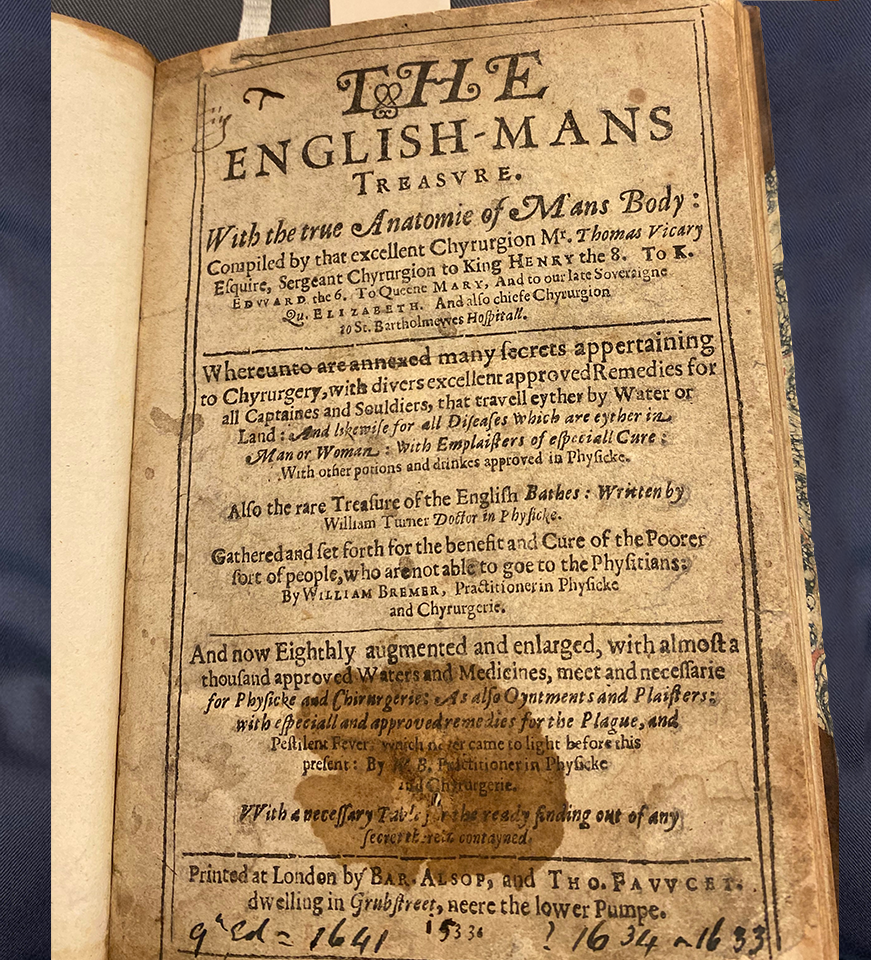
English-mans treasure; With the True anatomie of mans body
Author: Vicary, Thomas, ~1490 -1561.
Date: [1633]
WZ250 V53 1633
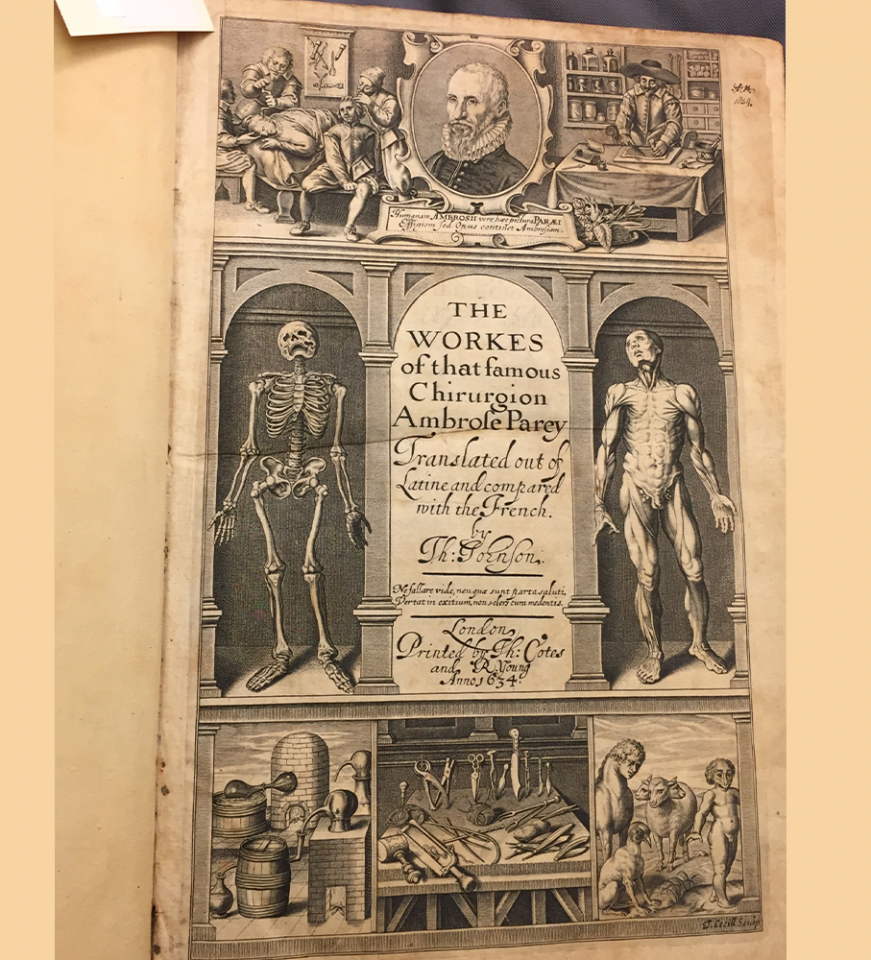
Workes of that famous chirurgion Ambrose Parey
Author: Paré, Ambroise, 1510-1590
Date: 1634.
WZ2450 P28 1634
Medicine in the Age of Shakespeare 2
Vesalius revolutionized the science of anatomy and revolutionize the traditional anatomical teachings of Galen. His De humani corpus fabrica is considered one of the greatest medical books in his and is renowned for its woodcuts of musclemen and typography. Both the Valverde and Crooke follow his tradition. Anatomia del corpo umano, an early Spanish medical book in 1556, plagiarized the text and copied the plates from Vesalius. Mikrokosmographia is similar to De humani corpus fabrica a it is large and amply illustrationed. It is a compendium of current anatomical knowledge, including material from Valverde, and pubished in English in 1618.
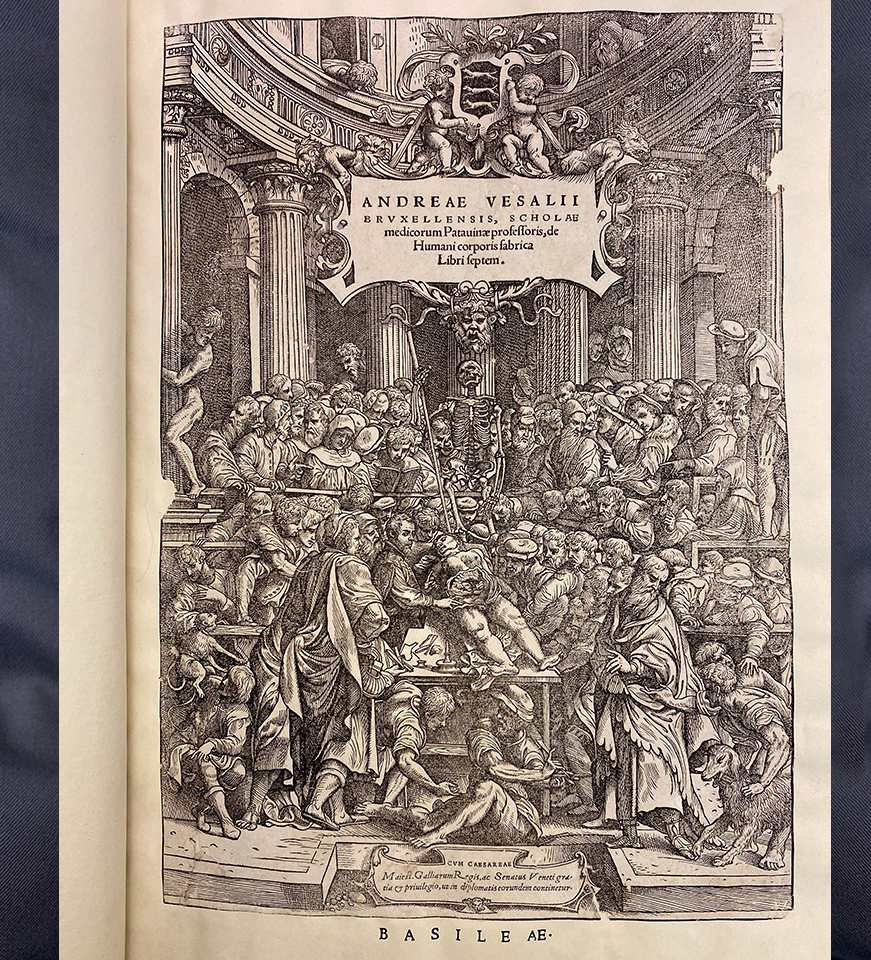
De humani corporis fabrica libri septem
Author: Vesalius, Andreas, 1514-1564
Date: 1543
WZ240 V38 1543
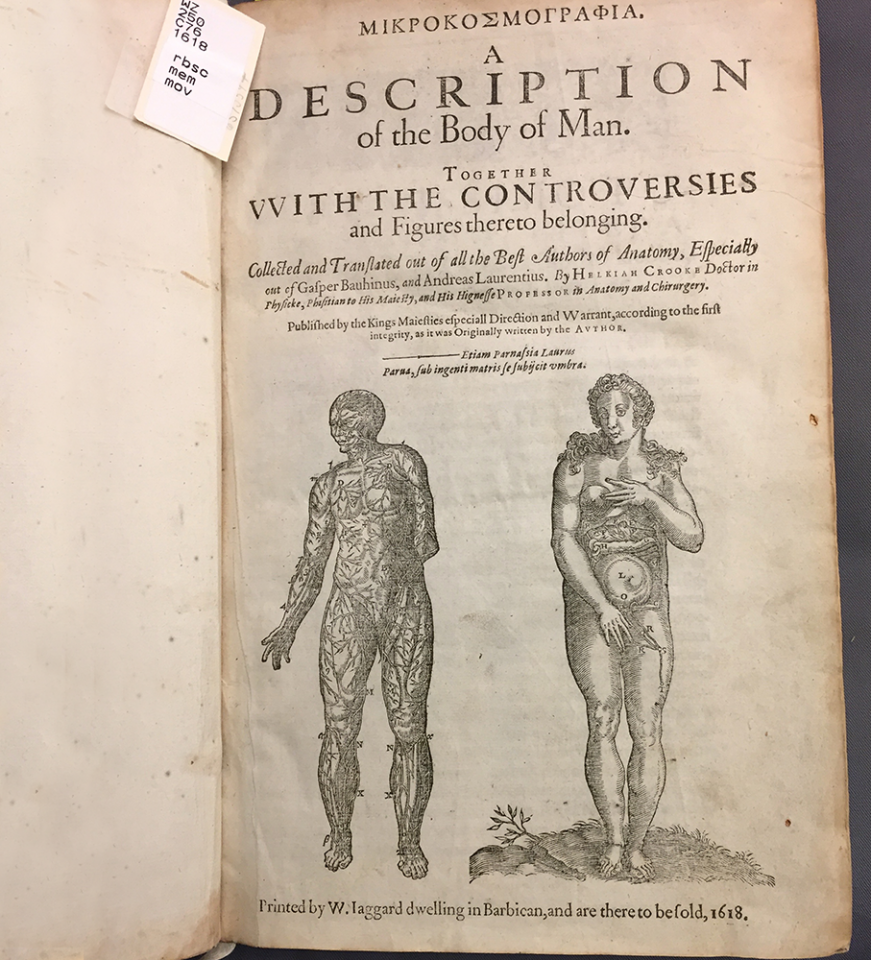
Mikrokosmographia: A description of the body of man
Author: Crooke, Helkiah, 1576-1648
Date: 1618
WZ250 C76 1618
Remedies in the age of Shakespeare
When the four fluids were out of balance, cures were designed to restore this balance. These books reflect the contrast of botanical and chemical remedies. Herbals provide names and descriptions of plants together with their medicinal powers. Gerard’s 2nd edition is considered the most important as it corrected mistakes in the first edition and increased the number of plants to 2850. Gerard plagiarized much of this work from the Belgian botanist Dodoens, who himself borrowed Fuchs. However, his own descriptions of localities and folklore shed light on Elizabethan England.
Similarily, Boorde’s book, Breviarie of health wherin doth folow remedies for all manner of sicknesses and diseases this work, describes the condition of hygiene in the 16th century. Du Chesne, aka Quercetanus, attempted to introduce Paracelsus’ doctrines and substitute the Galenic physic in France with chemical remedies. In this he is representative of the state of change in the 17th century.
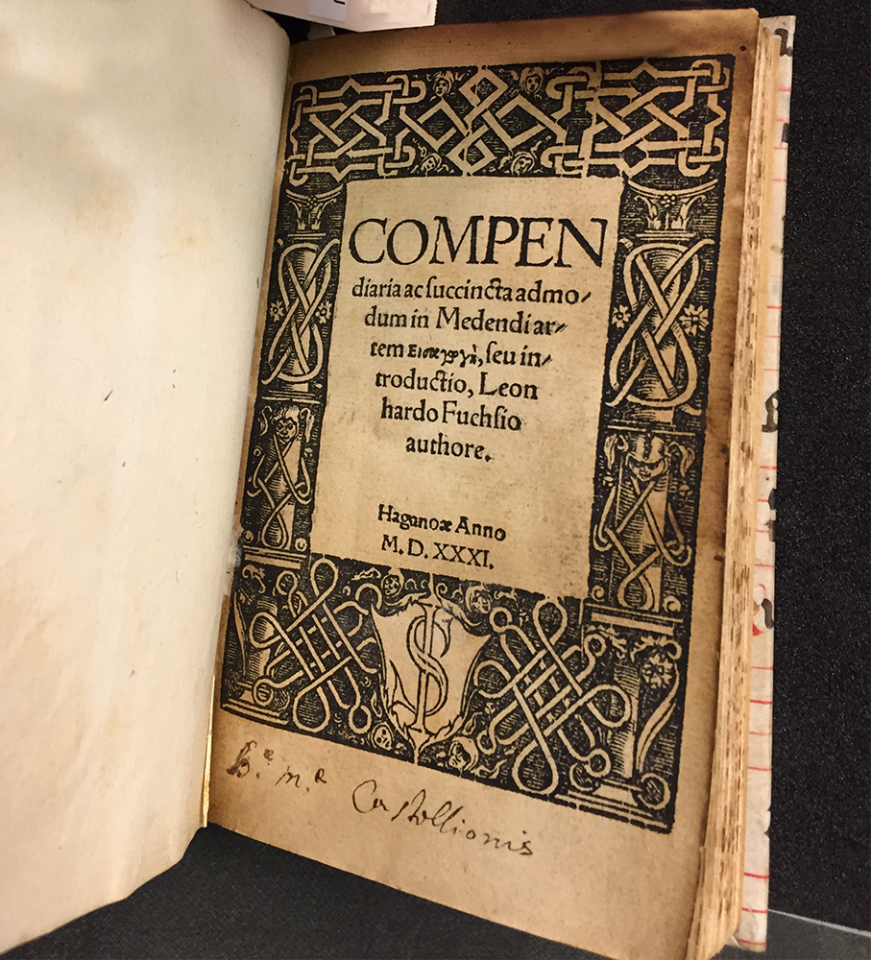
Compendiaria ac succincta admodum in medendi artem, eisagōgē
Author: Fuchs, Leonhart, 1501-1566
Date: 1531
WZ240 F829 1531
